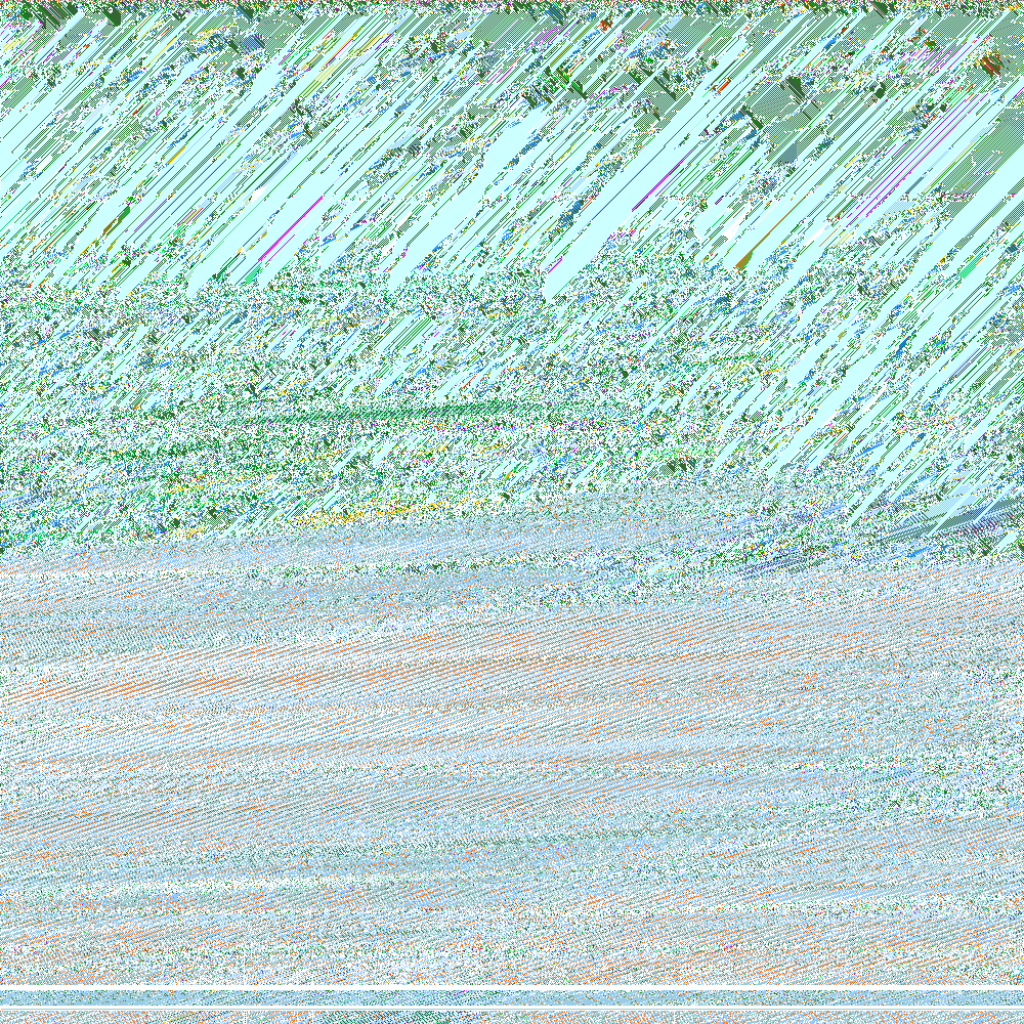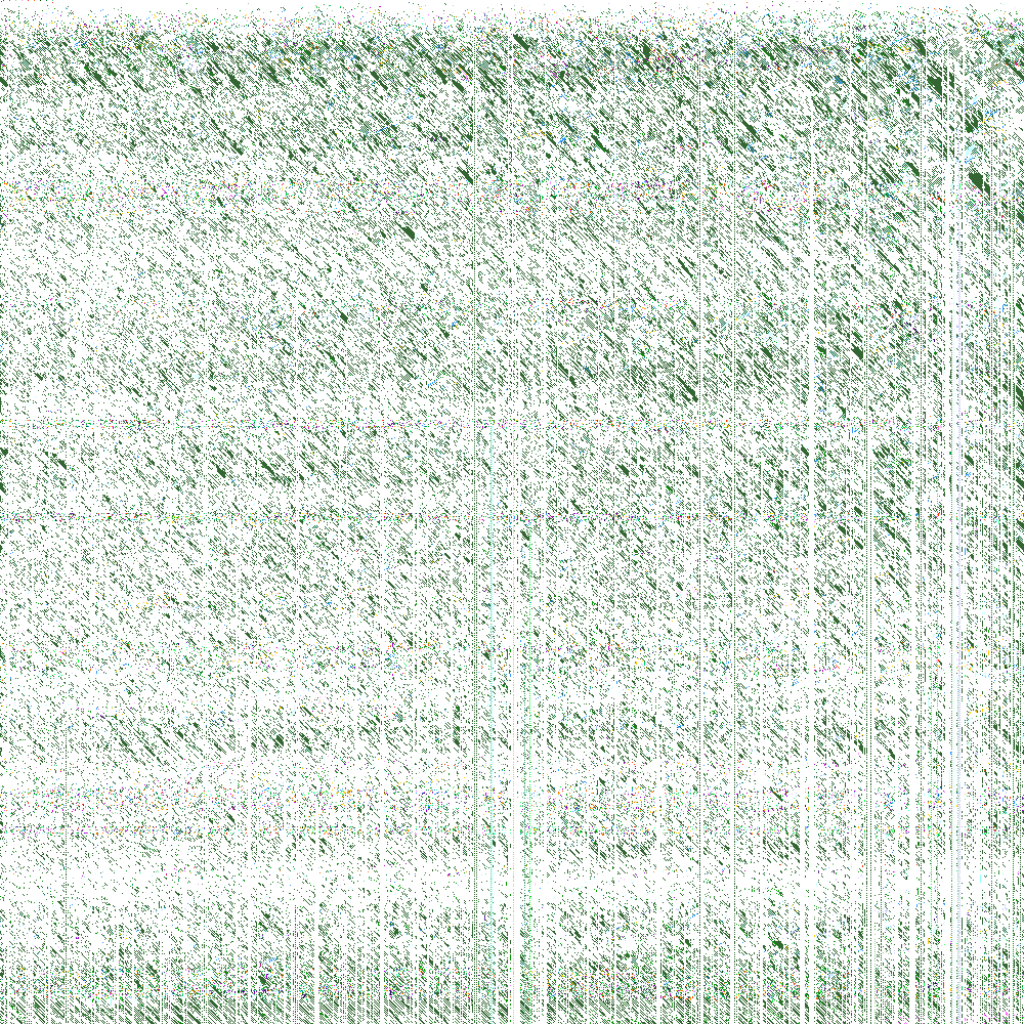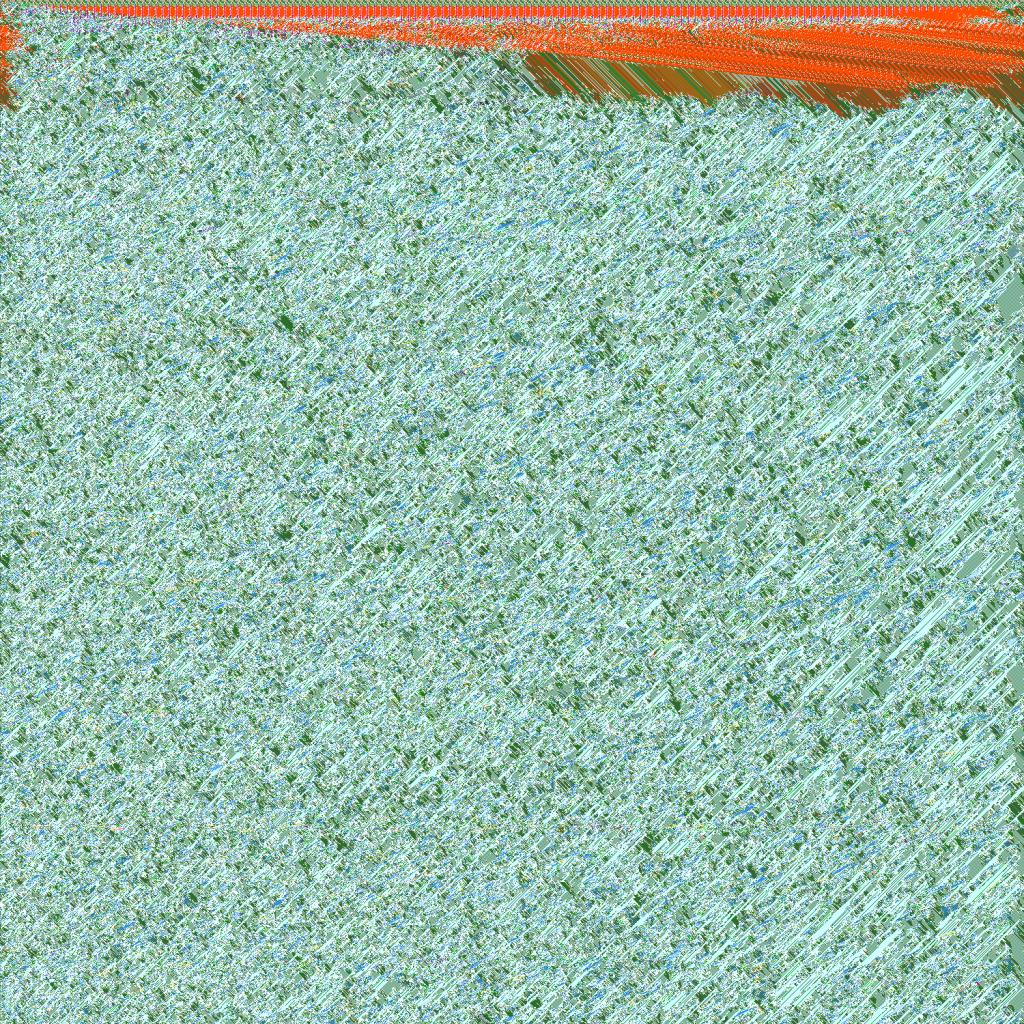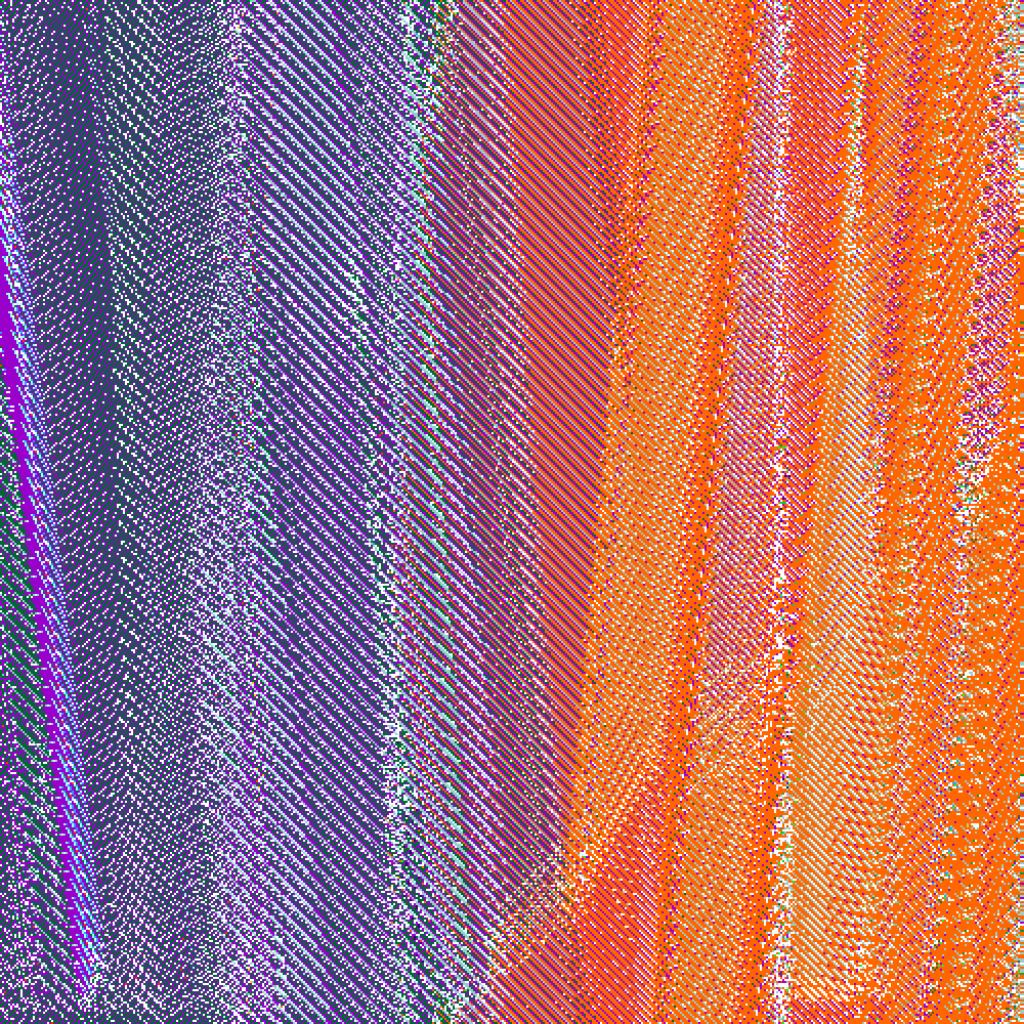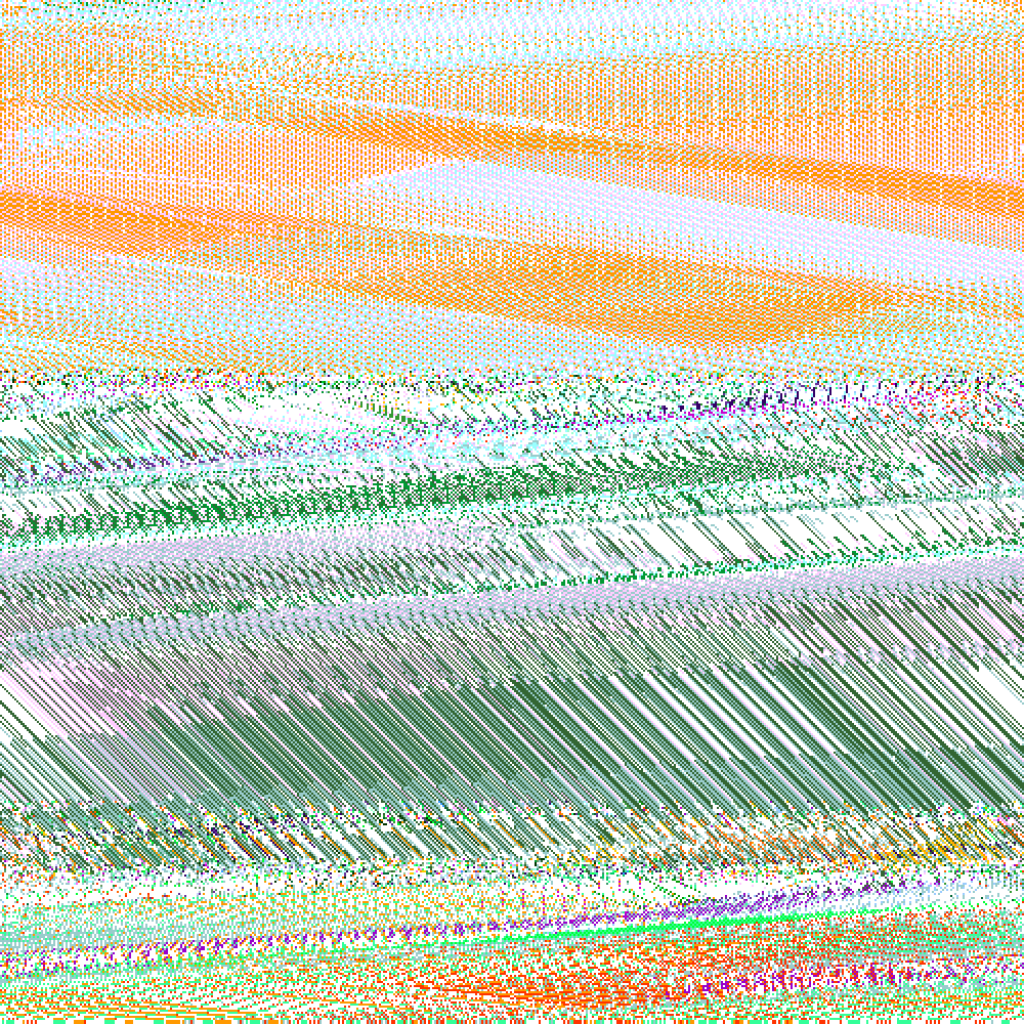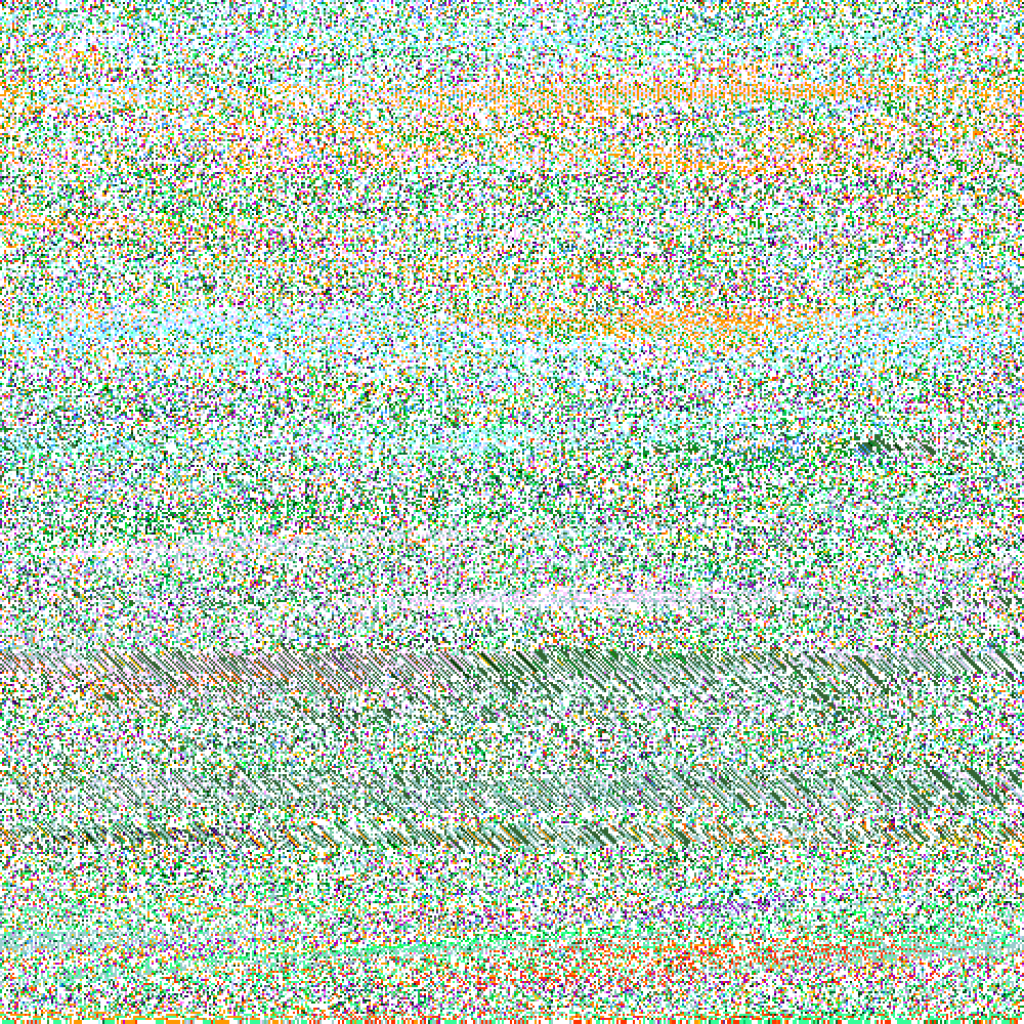Here's some more ephemera from the process of researching and writing Uncomputable. These images pertain to section IV of the book, titled "Computable Creatures," which explores the cellular automata work of Nils Aall Barricelli from the early 1950s. For these chapters I wrote a simple Processing sketch that mimicked Barricelli's original experiments. Here are some of the many failures -- and one or two successes -- in the process of debugging and fine tuning Barricelli's algorithm.
Note these images are meant to be read from top to bottom. They represent a temporal snapshot of evolutionary time. Color fields and textures represent discrete "creatures." According to Barricelli the creatures are alive, they evolve, mutate, and even die.
+ + +
First group.. these are the failures..
Some nice biodiversity through the first few hundred generations, but then disorganized static starts to take over. Barricelli was clear on this point: avoid monoculture but also avoid chaos. Find a balance between the two extremes.
An interesting image. But too chaotic for any living creatures to find their niche.
Chaos image. Some interesting speciation at the top.. then collapse.
Another version of the chaos image. Although some promising symbiosis appearing at the bottom.
This image was too pretty to discard. The stripes and textures indicate symbiosis -- two or more creatures interlocked in close interaction. (I rotated this image 90 degrees to accentuate the purple and orange; read this one side-to-side rather than top-to-bottom.)
+ + +
Second group.. these begin to resemble the kinds of successful outcomes documented by Barricelli in the early 1950s. I think he would approve of these images.
An image that nicely captures the kind of balance Barricelli was seeking. Diverse and complex enough to facilitate life and encourage mutation and evolution, but not too corrosive or anarchic.

I like this one because it shows a sharp distinction between "mutation zones" (the randomly colored pixels) versus more stable "life fields" (the yellow zones etc.).
Another success image. This one is a good illustration of symbiosis, as depicted in the high number of alternating stripes.
A loose evolutionary field. Lots of vitality. Lots of plasticity. Lots of mutation. Copious evidence of life and co-existence.
+ + +
We decided on the following image for the cover of Uncomputable. Granted it's a bit more chaotic than Barricelli would have liked.. but then again we live in chaotic times..
